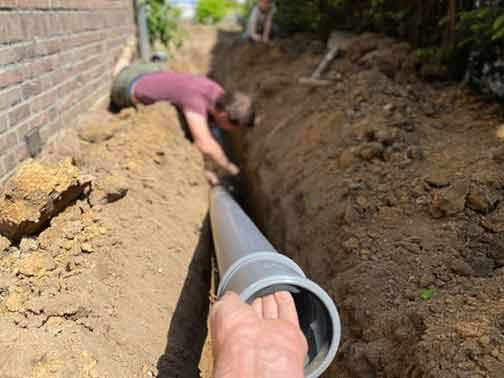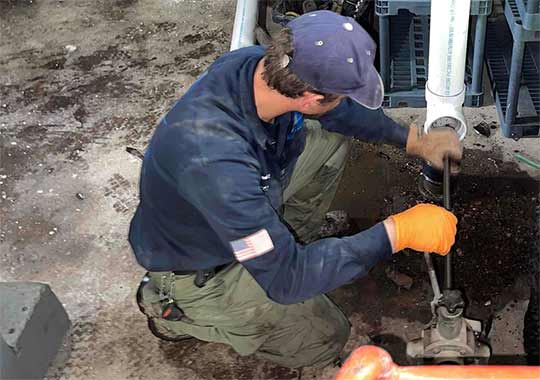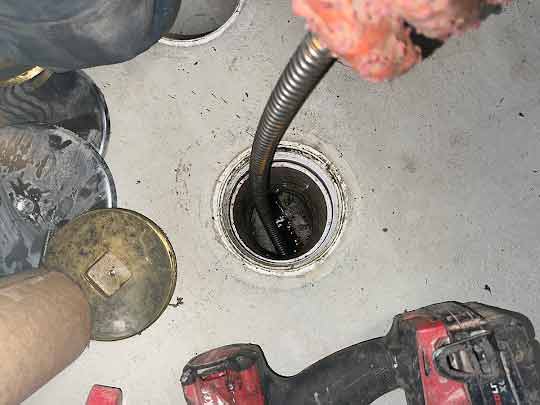
Drain pipes get clogged; this happens as a result of the debris inside wastewater collecting within the pipes. These clogs can impair the function of your drainpipes and even shorten their lifespan. As Leenan Management Professionals advises, cleaning your home’s drain system is the best way to prevent clogs, blockages, damaged pipes, sewer backups and other kinds of drain issues.
There are many ways to clean your home’s drains but methods preferred by most professional plumbers are motorized drain snakes and hydro-jetting. The drain-cleaning method you use matters because each method has pros and cons. Some cons of a particular method may include the risk of potential damage to your drainpipes.
Today, we look at hydro-jetting and how it impacts the aging pipes in your drain system.
What is hydro jetting?
Hydro jetting is when a professional plumber uses a motorized device – a “Jetter” – to send high-pressure water via a flexible hose into your home’s drains or sewer line. The water is blasted against the pipes using a stainless steel nozzle that can shoot water in different directions and at various angles. This water may be cold or scalding hot (80-200 °C).
The water pressure used in hydro-jetting ranges from 1,000 to 5,000 psi (pounds per square inch). That is enough pressure to dislodge any clog inside the pipes or even shear away tree roots. When hot water is used during hydro-jetting, the potency of the operation increases; no clog can withstand the combination of heat and pressure.

How hydro-jetting affects old pipes
But the very thing that makes hydro-jetting an effective tool for maintaining the health and function of your home’s drain system also makes it a problem. The water pressure used in hydro-jetting may be too much for some pipes, and they can crack. This problem happens mostly with old pipes or made from certain materials.
Older pipes are naturally going to be weaker than new ones. The likelihood of weak spots in an old drainage system is also higher. If such old pipes are hydro-jetted, the probability that they will develop leaks is very high. To help you understand the risks, here is an explanation of how different pipe materials are altered by aging:
- Cast iron: Cast iron is famous for its durability but rust is a huge issue for cast iron pipes. Exposure to water over a while will eventually make them fragile.
- Copper: Copper pipes are highly vulnerable to corrosion. After spending time in the ground, copper pipes start to form pinholes from oxidation.
- ABS: This is a polymer that is somewhat similar to PVC. The problem with ABS pipes is they become brittle after prolonged exposure to low temperatures.
- Clay: Clay pipes, being organic, are prone to start degrading as soon as they are buried in the ground. They are highly susceptible to penetration by tree roots.
For these reasons, hydro-jetting is not always a safe option for cleaning aging pipes. If your drain pipes are old, you may want to have them visually inspected before hydro-jetting them. You can do this with a sewer camera inspection. A sewer camera inspection will let you see where the clogs are in your sewer line and also show you the condition of your pipes.
A sewer camera inspection uses a specialized camera that is mounted on the end of a line. This line is sent into the drains, and the live video feed from the camera is monitored above ground by a nearby plumber. The line can be manipulated to move the camera in different directions, allowing the plumber to get different views of the problems.
If your drainpipes are clogged, and a sewer camera inspection shows that the pipes are too old to be hydro-jetted, what other drain-cleaning options do you have?

Alternatives to hydro-jetting
The most viable alternative to hydro-jetting is drain snaking. This method is similar to hydro-jetting, but it is a lot safer for fragile pipes. When snaking a drain, a long flexible tube – “drain snake”– is inserted into the drain via a cleanout or drain opening. This tube contains a cable with a corkscrew auger at its end.
With the help of a hand crank, the plumber can twist the cable to spin the corkscrew auger. That way, the auger is used to push, pull or hook any blockages inside the line. It can be done such that the drain snake does not come into contact with the pipe walls, which makes drain-snaking a safer alternative to hydro-jetting.
In closing, should you hydro-jet your old drain pipes or snake them? That depends on the condition of your pipes. Just because your drain pipes are old, it doesn’t mean you cannot hydro-jet them. To determine the proper cleaning method for your drain system, it is best to do a sewer camera inspection first.
